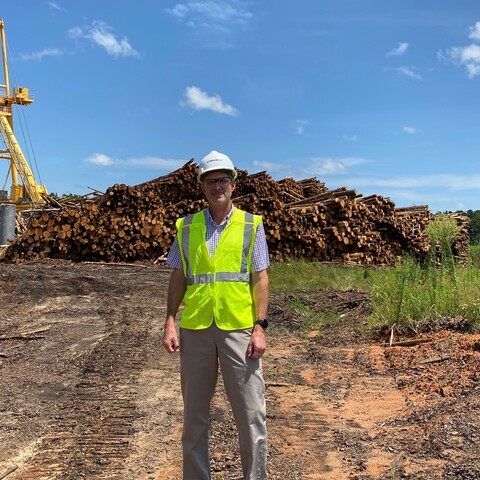Sustainable Forestry is Key to a Healthy and Lasting Paper Industry

Paper and wood products touch our everyday lives.
From the structure of buildings that we live in, to the hygiene products we use, we rely on forest products. But the source they come from depends on us.
Tony Diaz, chip mill operations manager with Graphic Packaging International LLC and president of the Louisiana Forestry Association, knows and understands this relationship. And he’s on a mission to educate others on the importance of sustainable forestry.
“Sustainably managed forests are a prerequisite to a healthy and lasting paper industry,” Diaz said. “My goal is to help make sure forest landowners become more educated about their valuable resource.”
Diaz believes that sustainable forestry is not just another buzz phrase. Instead, he thinks it takes constant vigilance by everyone involved.
“The future of sustainability must include a viable way to manage the balance of forest growth with the demands of both domestic and world markets for this renewable resource,” said Diaz. “The needs of the environment and the economy are most appropriately met simultaneously in forests.”
Sustainable forest management isn’t just focused on current foresters and landowners. Education for the next generation of foresters is important and exciting. These future careers don’t just include traditional forestry practices, but also new technologies, such as drones, satellite imagery and innovative software.
“College curricula are exposing new foresters to all the proven, reliable management practices along with the most current technology. They are also learning that forests play a critical role in culture, biodiversity and climate,” Diaz said.
A soft spot Diaz has when it comes to educating the next generation is Graphic Packaging’s participation in the Paperboard Packaging Council’s TICCIT program to help teach elementary school-aged children. For many years, he’s participated and taught students about paper recycling and replanting renewable forests. And he led an effort to develop a coloring book to help educate children about sustainable forestry.
As Diaz continues his mission to share best forest management practices, he noted the advances the U.S. forest industry has already made.
“Sustainable forestry practices in the United States have made great progress, and I think it is important that we recognize that as we push forward to innovate. The United States is an international leader in forest sustainability.”
